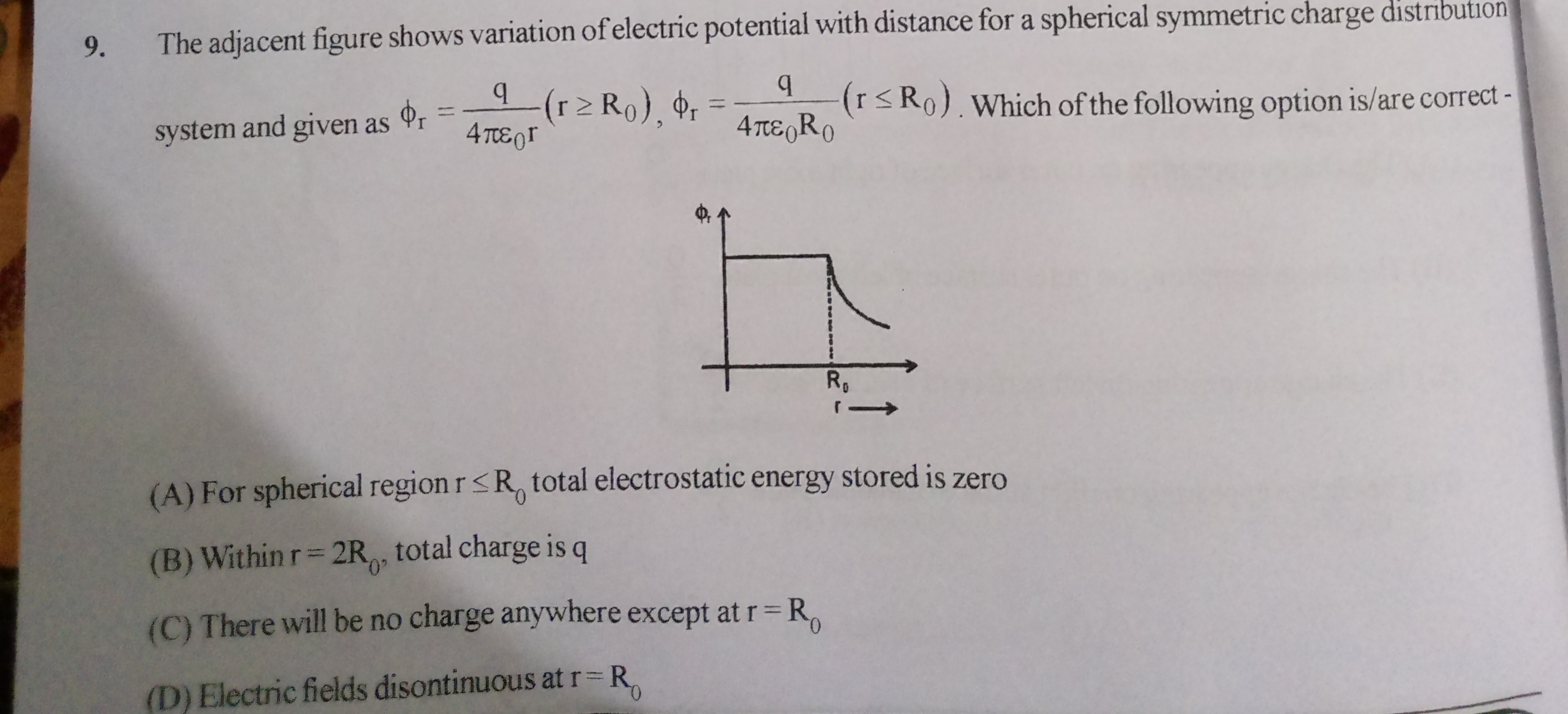Question
Question: The adjacent figure shows variation of electric potential with distance for a spherical symmetric ch...
The adjacent figure shows variation of electric potential with distance for a spherical symmetric charge distribution system and given as ϕr=4πϵ0rq(r≥R0), ϕr=4πϵ0R0q(r≤R0). Which of the following option is/are correct -

For spherical region r≤R0 total electrostatic energy stored is zero
Within r=2R0, total charge is q
There will be no charge anywhere except at r=R0
Electric fields disontinuous at r=R0
There will be no charge anywhere except at r=R0
Solution
The electric potential is constant for r≤R0 and decreases as 1/r for r≥R0. This potential distribution is characteristic of a charged conducting sphere or a spherical shell with charge q on its surface at r=R0. Inside a conductor, the electric field is zero, and the potential is constant. The charge in a conductor resides on its surface. Outside a spherically symmetric charge distribution, the potential is the same as that of a point charge at the center if the total charge is q.
From the given potential, the electric field for r<R0 is Er=−drd(constant)=0. The electric field for r>R0 is Er=−drd(4πϵ0rq)=4πϵ0r2q.
Since the electric field is zero for r<R0, by Gauss's law, there is no net charge within any sphere of radius r<R0.
Since the electric field for r>R0 is the same as that of a point charge q at the origin, the total charge enclosed within any sphere of radius r>R0 is q.
Since there is no volume charge density for r<R0 and for r>R0, and the total charge is q, the entire charge must be located at r=R0 as a surface charge. Therefore, there will be no charge anywhere except at r=R0.
